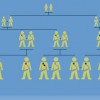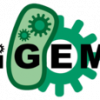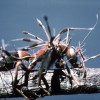Archive for February, 2010

Music, Education, Neuroscience
Feb 22nd
At the recent annual meeting of the American Association for the Advancement of Science, the topics of music-education and neuroscience were highlighted by Nina Kraus, Professor of Neurobiology, Physiology and Communication Sciences at Northwestern University. In a study to be published in the April edition of Nature Neuroscience, his group demonstrated that children with some musical training were better able to distinguish sounds (in this case tonal variants of mandarin Chinese words) then their amusical peers. Specifically this study looked at distinguishing these sounds from a complicated sound background.
While this is a very focused study, it is clear from a More >

Eliminating Undesirable Traits
Feb 18th
Eugenics aimed to eliminate undesirable traits. But how do you define “undesirable”? There is anecdotal evidence that the incidence of some disorders has decreased due to genetic testing (see “Testing Curbs Some Genetic Diseases,” by Marilyn Marchione). In and of itself, this is a good thing, but is this eugenics? It would be hard to argue that most genetic diseases are undesirable; but some of the steps taken to eliminate disease — abortion, embryo screening — are controversial.
In contrast, there was a an effort to prevent hereditary blindness within the eugenics movement. Its proponents collected pedigrees, drafted legislation to prevent More >

Genes Don’t Exist to Cause Disease
Feb 17th
It is not uncommon during labs on mutations, to discuss that mutations can cause genetic disease. Students will use the phrase “the gene for breast cancer” or “the gene for hemophilia” when these discussions take place. What many think, is that individuals with breast cancer or other genetic diseases have a gene that others do not. In reality, they have a gene that everyone has, but the gene has a mutation that affects its function. Genes don’t exist to cause disease. This is a recurrent theme for me!
For example, when someone has hemophilia (a blood clotting disorder), there is a More >

Synthetic Biology
Feb 16th
Genetic engineering is a common tool used by molecular biologists to manipulate the genes of an organism. One of the common forms of this technology is to transform bacteria with a gene from another organism, for example, the green fluorescent protein gene from the Pacific Jellyfish. Giving this gene to bacteria will allow them to produce this protein and literally glow green. This technique has been widely used by pharmaceutical companies to produce human proteins as well to treat some common genetic disorders, such as diabetes. To see more on insulin production inside bacteria see, visit our DNAi.org section on manipulation.
Undergraduate students are now More >

Genetics and Behavior
Feb 8th
Genetics plays a greater role in our lives than many of us realize. While certain behaviors seem obviously connected to a need for survival, many behaviors are linked to genes in ways we do not yet understand. So, to what extent do our genes dictate our behaviors?
One example of controlled behaviors has stirred up a variety of questions. A species of fungus, Ophiocordyceps unilateralis, infects a type of carpenter ant. What is unusual about the infection is that the fungus somehow directs the ant to move to a location on the leaves of the trees normally inhabited by the ants. More >

The Autism-Vaccine Link and Trusting Science
Feb 8th
Almost twelve years after its original publication, The Lancet medical journal has formally retracted the infamous paper by Andrew Wakefield and colleagues that had posited a link between vaccines and autism. This follows a partial retraction in 2004, and succeeds the stern judgment by the UK General Medical Council’s Fitness to Practise Panel “that several elements of the 1998 paper by Wakefield et. al. are incorrect, contrary to the findings of an earlier investigation.”
So that finally puts the autism-vaccination link to bed, right? Wrong. To read some responses in the blogosphere, one could assume that The Lancet had declared war on all More >
AIDS Cure?
Feb 5th
How do you cure a man of both leukemia and AIDS with just one procedure? No, it’s not a trick question: an American leukemia patient living in Berlin received a bone marrow transplant that also resolved his AIDS.
In a bone marrow transplant, a patient’s own marrow is destroyed and replaced with tissue from a donor. The donor marrow contains healthy hematopoietic stem cells (HSCs, adult stem cells in the blood) which repopulate the patient’s body with healthy red and white blood cells for oxygen transport and immune defense. Just as with other varieties of organ donation, tissue-type matches are critical. In the case of More >

Getting an edge on breast cancer
Feb 3rd
Cancer is a life threatening disease characterized by uncontrolled growth of cells coupled with malignant behavior. The causes leading to cancer are believed to be genetic, environmental, or a combination of the two. Chemotherapy is one of a number of treatments for cancer. It utilizes a regiment of chemicals toimpair cell division and/or induce programmed cell death.
Research carried out by Dr Yang Li and colleagues at Harvard Medical School, the Technical University of Denmark, and the Université Libre de Bruxelles, have highlighted two genes – LAPTM4B and YWHAZ – that may inhibit the response of anthracycline-based adjuvant chemotherapy for breast More >
